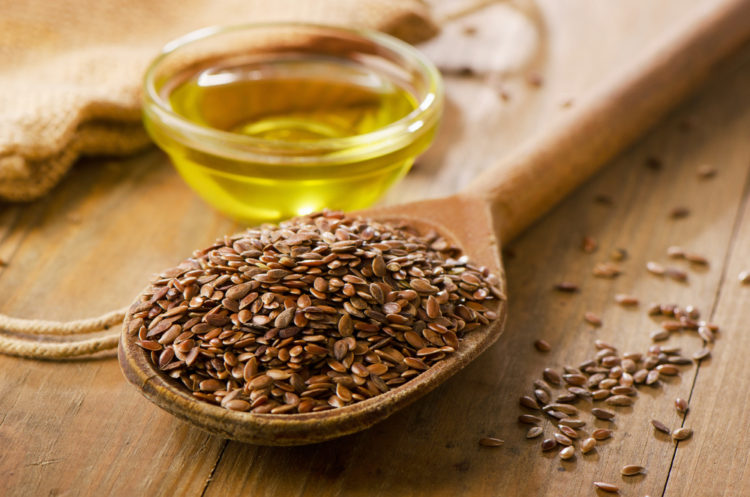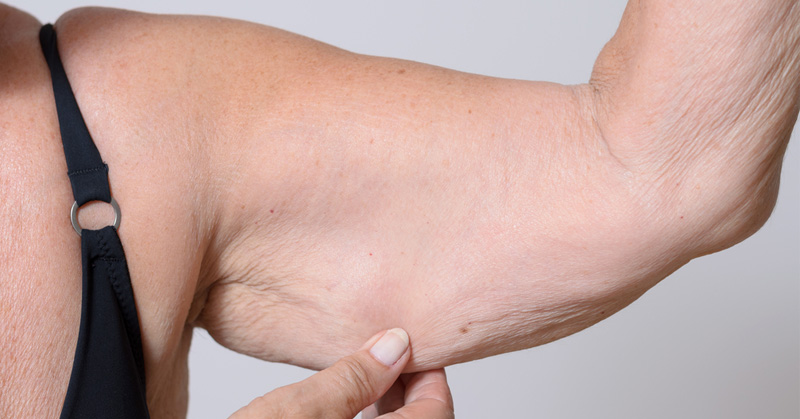For most adults, achieving peak muscle mass occurs during their late 30s to early 40s. After that point, a gradual loss of muscle mass begins and can continue a steady, downhill course into old age. This age-related loss of muscle mass, strength and function is known as sarcopenia, and it can happen quickly. Those who are physically inactive can lose as much as 3 percent to 5 percent of their muscle mass per decade after age 30. (1) Here now, are the sarcopenia causes, sarcopenia symptoms, and sarcopenia treatment methods you need to know.

Sarcopenia Causes
A lack of exercise and inactivity combined is at the top of the list of sarcopenia causes.
However, even lifelong physically active people can experience sarcopenia. Researchers have suggested the following four factors play a role in developing sarcopenia:
- Age-related reduction in nerve cells responsible for sending signals from the brain to the muscles to initiate movement.
- Inadequate intake of calories and/or protein to sustain muscle mass.
- A decrease in the body’s ability to synthesize protein.
- A decrease in the concentrations of some hormones, including growth hormone, testosterone and insulin-like growth factor.
Nutritional deficiencies, smoking, excessive alcohol consumption and inflammation also contribute to an increased likelihood of sarcopenia. Conditions like heart failure, cancer and diabetes are other causes.
Sarcopenia Symptoms
Muscle degeneration is the most glaring of the sarcopenia symptoms. It generally begins to appear in the fourth decade of life. The problem may accelerate after the age of about 75 years old.
In addition to decreased muscle mass and strength, other symptoms and may result from sarcopenia. Frailty, problems with mobility, falls and fractures, decreased activity levels, may occur. In addition, look for a loss of independence, weak bones, and weight gain from lack of activity.
The metabolic effects of sarcopenia include a decrease in resting metabolic rate, which leads to a higher prevalence of insulin resistance, type 2 diabetes mellitus, dyslipidemia (an elevation of plasma cholesterol, triglycerides or both) and hypertension. (2)
Sarcopenia Treatment
While everyone loses some muscle mass with age, natural sarcopenia treatment can slow or even reverse that loss.
For the elderly, maintaining muscle mass and function is vital to having functional independence. Muscle deterioration can be prevented, decreased and reversed with the following sarcopenia treatment methods.
1. Exercise Regularly
The adoption of a more sedentary lifestyle is the worst choice to make when it comes to warding off sarcopenia.
When it comes to sarcopenia, exercise has been shown to increase strength, aerobic capacity and muscle protein synthesis. Exercise also increases muscle mitochondrial enzyme activity in both young and older people.

Resistance exercise, in particular, has been shown to decrease frailty and improve muscle strength in very elderly adults. Exercise is recommended on most days of the week, but a minimum of three times per week is recommended. Slowing muscle loss and prevent sarcopenia is one of the biggest benefits of exercise as we age.
2. Increase Dietary Protein
Protein is the best food for repairing and building muscle fibers. Studies show 12% of men and 24% of women over age 70 eat significantly less optimal protein levels. The recommended protein for healthy adults is 1.2 gram per kilograms of body weight each day. For those with sarcopenia, protein needs are even higher at 1.2 to 1.5 g/kg a day.
3. Choose Protein Wisely
When it comes to positively impacting sarcopenia, what type of protein you consume is crucial. The type of protein you eat also seems to play a role in preventing muscle loss.
Dietary protein is made up many types of amino acids. (3) The body can make some amino acids on its own, but the rest it must obtain from protein-rich foods. Of the 20 total amino acids, certain ones are considered “essential” because we aren’t capable of making them ourselves. Others are “nonessential” because the body can create them by synthesizing other amino acids.
The amino acid leucine has been shown to preserve body muscle. Leucine is an essential amino acid, which means our bodies cannot produce it, so we must get it from dietary sources. A 2010 study showed that the ingestion of leucine-enriched essential amino acids stimulates muscle protein synthesis. (4)
Leucine is found in higher amounts in eggs and products made with milk. It’s also found in soybeans and, to a lesser extent, other beans, nuts and seeds. Therefore, increase protein in your diet with lentils, black beans or other beans. Also recommended are natto, free-range eggs and raw goat milk and cheese.

Eating enough protein is necessary to build and maintain healthy muscle mass, while also supporting tendons, ligaments and other body tissue. Eating protein before and after exercise helps increase muscle recovery and serves as effective muscle ache treatment. (5)
4. Get More Omega-3s
Omega-3 fatty acids have been found to influence muscle protein metabolism and in the context of human aging. A study found that dietary omega-3 fatty acid supplementation increases the rate of muscle protein synthesis in older adults. (6, 7)
You can consider supplementing your omega-3 acid intake with flaxseed oil.

5. Hormone Balance
Hormonal factors can significantly affect muscle mass. If you’re 40 years of age or older, you can have annual blood work done to track your hormone levels.
For women in particular, hormonal balance can have a direct effect on sarcopenia. Menopause is linked to reduced concentrations of a hormone called estradiol in middle-aged and older women. It’s believed that hormonal changes and balance may play a role in sarcopenia in older women. (8)
6. Vitamin D
Studies have shown low blood levels of vitamin D are associated with lower muscle strength and increased body instability in older subjects. (9) Vitamin D deficiency is the most common nutritional deficiency for older adults regardless. Up to 90 percent of adults in the U.S. are believed to have a vitamin D deficiency.
Low vitamin D levels have been associated with sarcopenia. Supplementation of vitamin D in individuals with low levels can help improve muscle function and muscle mass. (10)
7. Eat More Anti-Inflammatory Foods
Chronic inflammation has received attention as a potential contributor to sarcopenia. (11) Eating a more anti-inflammatory diet is crucial. Avoid overly processed, unbalanced foods.

For the sake of improving sarcopenia as well as your overall health, you should increase your intake of anti-inflammatory foods. Green leafy vegetables, blueberries, pineapple, and walnuts are all recommended.
8. Cut Pro-Inflammatory Foods
While eating anti-inflammatory foods, you will also help yourself by foregoing pro-inflammatory foods and substances. Two pro-inflammatory substances are high fructose corn syrup and trans fats. Found in processed foods, these ingredients cause inflammation that contributes to sarcopenia.

Processed foods are also likely to be higher in omega-6 fatty acids, which are necessary but not in large quantities. In excess and without the balance of omega-3s, omega-6 fats actually create inflammation in the body. The typical American diet tends to contain 14–25 times more omega-6 fatty acids than omega-3 fatty acids.
Simple, refined sugars and carbohydrates are more inflammation-causing culprits. Limiting refined grains is another important component of an anti-inflammatory diet.
9. Decrease Alcohol Intake
Drinking too much alcohol over time can weaken the muscles, which is a good reason for all adults to consider their alcohol consumption. If you know you already have sarcopenia, then you want to consider your alcohol consumption even more seriously.

Alcohol abuse appears to affect skeletal muscle severely, promoting its damage and wasting. Alcohol misusers also frequently suffer from low muscle mass and strength, muscle pain, and falls. (12)
Most alcoholic beverages remove critical nutrients from your body. Alcohol, especially in excess, can also contribute to inflammation. With sarcopenia, you want to increase your nutrient intake significantly and decrease bodily inflammation.
10. Stop Smoking
For smokers, here is another great reason to quit. Cigarette smoking is associated with poor lifestyle habits, such as low levels of physical activity and impaired nutrition. In addition, smoking itself is another lifestyle habit that has been found to be associated with sarcopenia.

Studies have found that men and women who were smokers were more likely to have sarcopenia. Electronic cigarettes are also a risk factor for sarcopenia.


